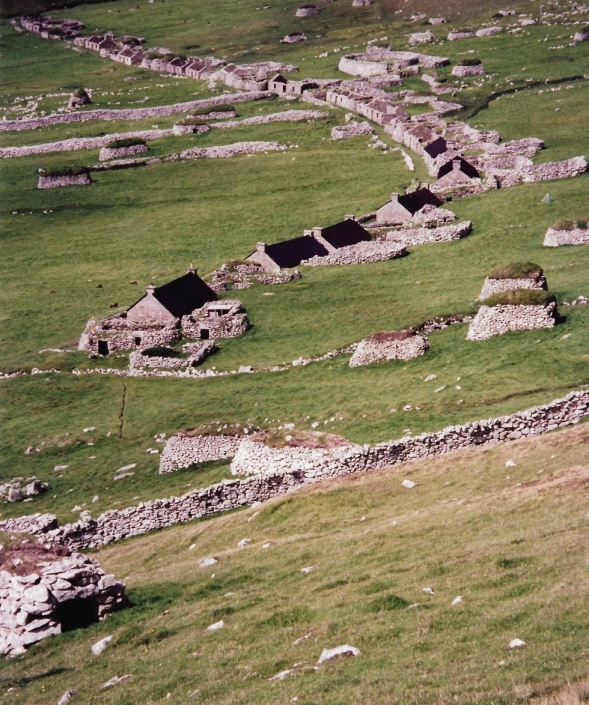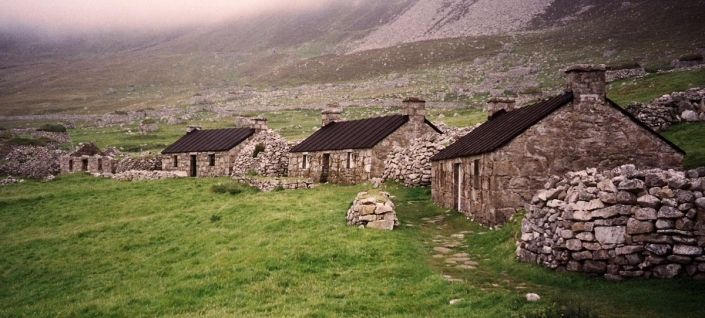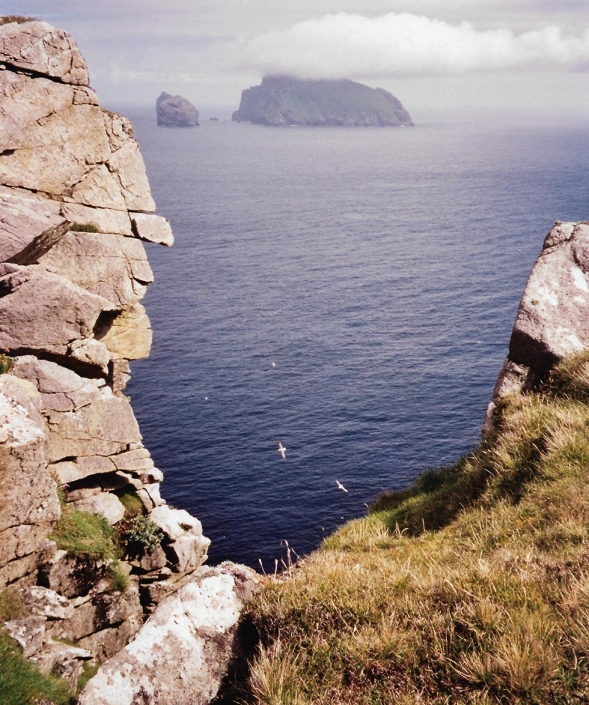St Kilda: The very effort just to get there can be an epic adventure!
IT is for many the single most evocative place on earth, with a mystique that is difficult to understand…until you go there.
This wild and untamed outpost was once home to as many as 180 hardy souls who endured its hardships in the heaving North Atlantic 115 miles west of the Scottish mainland.
St Kilda’s sad story – a monumental tale of human endeavour – is as tragic as any. It was on August 29, 1930 that the dwindling population was evacuated when life became unviable.
These days it is mostly visited by ornithologists wanting to witness the great, raucous colonies of seabirds; diving parties who have heard of its stunning underwater attractions; curious cruise ship passengers or National Trust for Scotland volunteers.
For most, it’s the getting there that sets the greatest challenge.
And, sometimes even that is not so easy.
The 41-mile journey across from the Outer Hebrides could certainly be described as character-forming.
We ended up caught in a Force 8 gale and had to turn back and seek shelter as the MV Cuma, although a 67-footer and built to withstand big seas as a fisheries research vessel, was tossed about like a rubber duck in a Hotpoint front loader.
The hardier passengers, still fresh-faced and with stomach still intact, boasted it was enjoyable – like going through a car wash on a bucking bronco simulator. Ha!
I had a different impression: Imagine being on one of those leaping carousel horses which was somehow still going up and down but connected instead to a fairground waltzer, then that combination turned into crazy contraption that took us for a ride on the rails of a roller coaster – all at the same time.
Squeamish didn’t come anywhere close to describing how I felt as skipper Murdo Macdonald finally delivered his human cargo into the semi-stillness of Village Bay.
The only thing which stood any chance of redressing the balance was the weather.
Prayed for calm
After surviving the washing machine, I prayed for a spot of calm and some sunshine to at least help make it seem that maybe it had all been worthwhile.
There’s a sadness that hangs over the little empty crofts once occupied by those who populated this desolate remnant of volcanic fury.
When eventually our captain turned the ship’s wheel to round Hirta and enter this edge-of-the-world place so few go to, a veil of low cloud too was happed like skull caps over the hilltops of Mullach Mor and Conachair.
The weather at Britain’s remotest archipelago is as fickle as can be. It was looking good when we set sail from Loch Roag all those hours earlier but midway, that storm blew up and forced us to run for cover back in Loch Resort, sheltered behind the island of Scarp.
Those who have made it there and back before say you should savour the experience of the journey by sea, no matter how rough. It sure brings the whole mindboggling question of human existence out there sharply into focus.
Where St Kilda’s concerned, although survival packs are not essential, proper preparation is a must. One July it was shirt sleeve warm one moment then snowing the next.
From 2pm until the dusky-summer darkness drew a veil over its presence around midnight, the low cloud draped itself there defiantly. Then in the morning as if to herald the start of a theatre show, the curtain lifted to unveil blue skies. Once ashore, I clambered far too hastily in my eagerness to take in everything I could, through the little street long since deserted by the St Kildan’s who could take no more of what this cruel place had to throw at them.
The Gap
Then, I climbed a thousand feet up to the rim of the cliffs far off to the rear of the abandoned houses to view Stac an Armin and Stac Lee standing out dramatically against the skyline beside awsome Boreray, through the crumbling rocky cleft known as The Gap.
It is tricky climbing to the top over wet, boggy peat and heather scythed to the ground by the cutting gusts which howl down the hillside. You must watch your footing as the slopes are steep and treacherous.
You must keep your eye on the sky as well.
For that’s where the kamikaze ‘Bonxies’ lurk – Great Skuas built like nightclub bouncers – prepared to divebomb anyone who steps within a hundred metres of their nest sites.
One had smashed itself straight into the head of National Trust for Scotland warden Andy Robinson.
“I had a ringing sensation in the ear for a few hours but after that it was alright,” he told me.
Once safely back down and exhilarated from the experience I ventured back along the little street of silent houses to visit the sombre graveyard enclosed by its beautiful circular dry stane wall.
In sacred places such as this with strong resonances of great sorrow, there is almost a residue in the air or an imprint left on the land.
In the nineteenth century many babies died of a persistent mystery illness and were buried here. From 1830 to 1880 alone, 77 infants were taken. It was finally discovered that the problem most probably came from a custom of dressing the remains of the child’s umbilicus with fulmar oil.
Those little bundles were all interred in this cemetery with its simple lichen-encrusted headstones.
I wanted to see if I could “hear the voices”.
Gaelic hymn
A German visitor who had taken the time to learn a Gaelic hymn once sang it inside this space which is heavy with heartache.
She returned to her ship with tear-filled eyes to tell how a ghostly choir had joined in as she paid her marvellous tribute.
And, as I stood in that most special place, eyes closed and deep in concentration, as if it was drifting in from way out to sea, so distant and just a trace, I imagined I heard the faint sound of that heavenly choir and goosepimples stood to attention up the full length of my arms.
It’s not all as eerie as this, although this place which attracts around 2000 tourists a year to its shores has an atmosphere distinctly different to anywhere else in the world.
In fact, there are lots of things which are peculiarly St Kildan.
Take the dark brown wild Soay sheep for instance, which look more like miniature deer and whose closest relatives are to be found in Sardinia. It is thought they first came here with the Vikings.
Then there are the tame field mice which pop in to the dining area at meal times to look for scraps.
There are the remarkable ‘cleits’, hundreds of stone-built little beehive bothies scattered on the hillsides which were mainly used as larders.
…And the famous PuffInn – a far-out pub in more ways than one – where you could get the equivalent of two brandies when you ask for one and it costs just over £1.
It had been opened and run as a NAAFI catering facility provided for MoD personnel and never had a pub or licensed premises permission, but welcomed visitors who could be signed in as guests. Sadly, it closed a few years back, but there’s been a suggestion it may open once more, with an accommodation wing as part of the plan.






